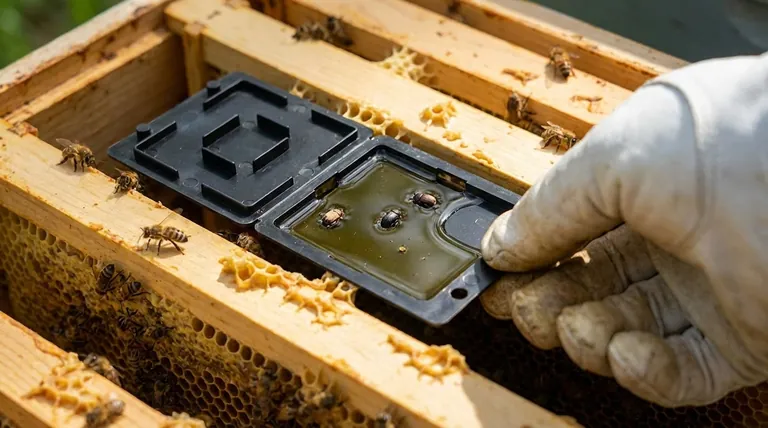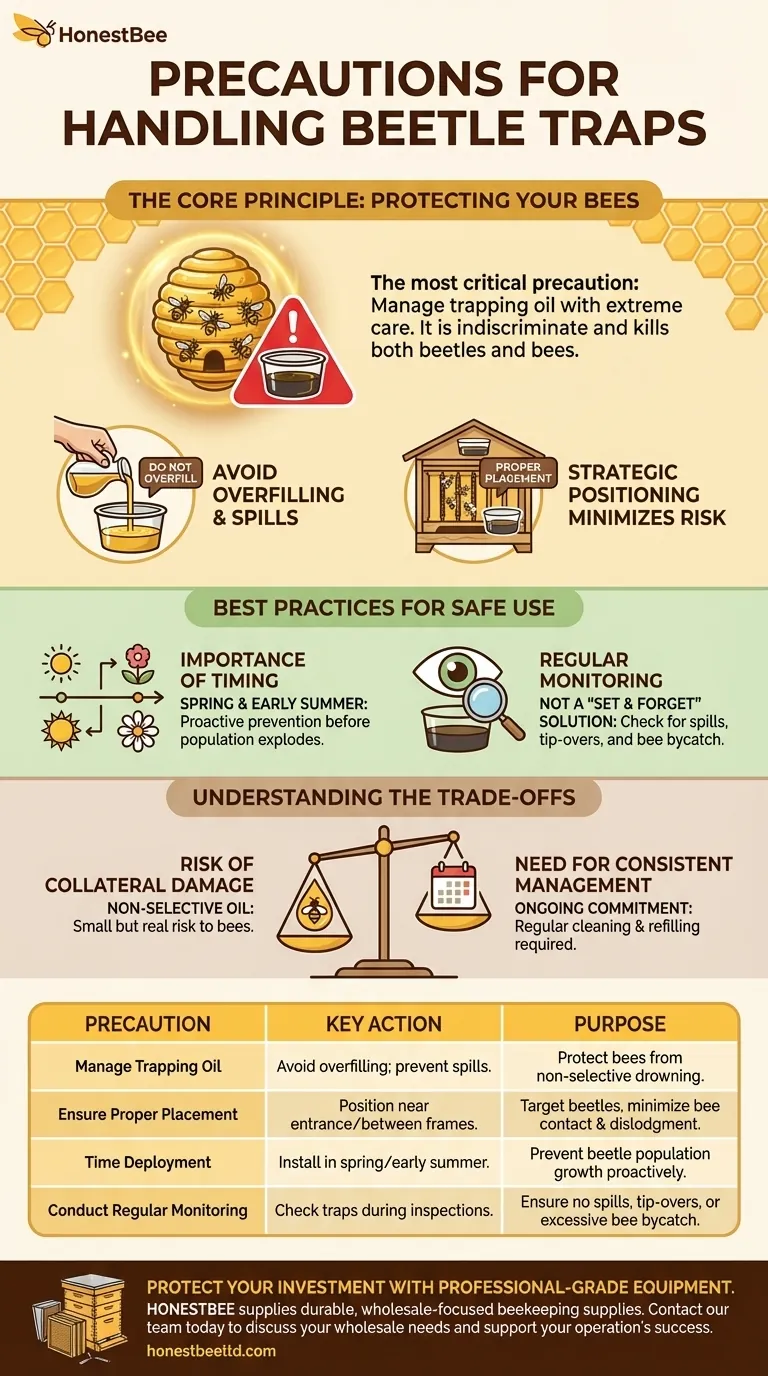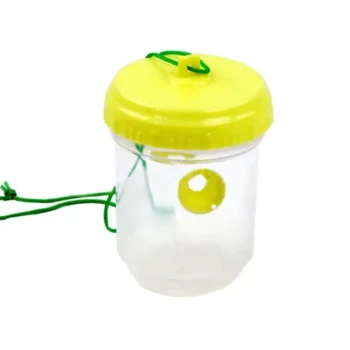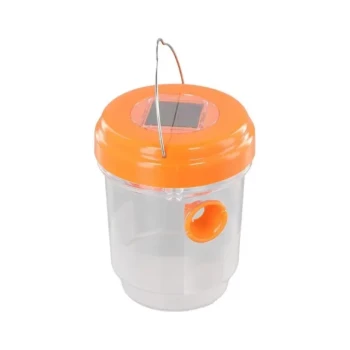The most critical precaution when handling beetle traps is to manage the trapping oil with extreme care. The oil is indiscriminate and can kill honeybees just as effectively as it kills small hive beetles, so it is essential to avoid overfilling the traps or spilling the contents inside the hive.
The core challenge of using beetle traps is that the mechanism designed to eliminate pests can inadvertently harm your bees. Therefore, every precaution taken is ultimately about protecting your colony from the solution itself.

The Core Principle: Protecting Your Bees
Using an in-hive beetle trap introduces a foreign element into the colony's delicate environment. The primary goal of any precaution is to isolate the threat—the trapping medium—so it only affects the target pest.
The Danger of the Trapping Medium
The oil used in many common beetle traps is the biggest risk factor for your bees. Once a bee falls into the oil, it cannot escape.
This is why avoiding spills is paramount. A single spill can endanger dozens or even hundreds of bees that come into contact with it while performing their duties.
Likewise, do not overfill the traps. An overfilled reservoir makes spills more likely during installation or inspection and reduces the margin of safety for any curious bees walking along the trap's edge.
Why Placement is a Precaution
Proper placement is a proactive safety measure. Placing traps inside the hive near the entrance or between the top bar of frames follows the natural movement patterns of beetles seeking to hide.
This strategic positioning also minimizes the risk of the trap being dislodged or knocked over by the beekeeper during routine hive inspections, reducing the chance of a harmful oil spill.
Best Practices for Safe and Effective Use
Beyond simply handling the physical trap, a comprehensive approach to safety includes timing and consistent oversight. These practices help manage the beetle population before it becomes a crisis.
The Importance of Timing
The best time to use beetle traps is in the spring and early summer. This timing is a preventative precaution.
By reducing the small hive beetle population early in the season, you prevent them from multiplying into a force that can overwhelm and destroy a colony later in the year.
The Role of Regular Monitoring
Traps are not a "set and forget" solution. Regular monitoring is a critical safety check.
When you inspect a trap, you are not only checking to see if it's full of beetles. You are also ensuring it has not tipped over, spilled its contents, or inadvertently trapped a significant number of bees.
Understanding the Trade-offs
While effective, oil-based beetle traps are not without inherent risks. Understanding these trade-offs is key to responsible beekeeping.
The Risk of Collateral Damage
The primary trade-off is the non-selective nature of the oil. It will kill any insect that becomes submerged in it, including your honeybees.
Every time you place a trap in the hive, you accept a small but real risk of causing unintended harm to the very colony you are trying to protect. This is why careful handling is not optional.
The Need for Consistent Management
These traps require an ongoing commitment. They must be checked, cleaned, and refilled regularly.
Forgetting to monitor them can lead to a trap becoming ineffective or, worse, creating a mess inside the hive if it breaks down or spills after being clogged with bees and beetles.
Making the Right Choice for Your Goal
Your approach to using beetle traps should align with your primary objective as a beekeeper.
- If your primary focus is absolute bee safety: Be meticulous with every step, using minimal oil and ensuring the trap is placed in a secure, stable location where bees are least likely to interact with it.
- If your primary focus is maximum beetle control: Combine careful handling with proactive timing, deploying traps in early spring to keep beetle populations from ever becoming established.
Ultimately, using these tools safely transforms you from a pest controller into a guardian of your colony's health.
Summary Table:
| Precaution | Key Action | Purpose |
|---|---|---|
| Manage Trapping Oil | Avoid overfilling; prevent spills. | Protect bees from non-selective drowning. |
| Ensure Proper Placement | Position traps near hive entrance or between frames. | Target beetles while minimizing bee contact and dislodgment. |
| Time Deployment | Install traps in spring/early summer. | Prevent beetle population growth proactively. |
| Conduct Regular Monitoring | Check traps during hive inspections. | Ensure no spills, tip-overs, or excessive bee bycatch. |
Protect Your Investment with Professional-Grade Equipment
As a commercial apiary or beekeeping equipment distributor, the health of your colonies is your livelihood. Proper pest management is critical, and it starts with reliable, well-designed tools. HONESTBEE supplies the durable, wholesale-focused beekeeping supplies and equipment you need to manage pests effectively and safely.
Let us help you safeguard your hives. Contact our team today to discuss your wholesale needs and discover how our products can support your operation's success and sustainability.
Visual Guide

Related Products
- Black Plastic Beetle Barn Hive Beetle Trap for Beehives
- Reusable Clear Small Hive Beetle Traps for Beehives Beetle Trapping Tools
- Reusable Aluminium Beetle Trap for Small Hive Beetles Silver Bullet
- Removable Washable Hive Beetle Trap Attractants for Small Hive Beetles
- Plastic Beetle Blaster Trap Beekeeping Tools and Supplies
People Also Ask
- What are the chemical-free options for trapping hive beetles? Control Pests Without Chemicals
- How should filled beetle traps be handled? Safely Remove and Dispose to Protect Your Hive
- What is the best time to use beetle traps? Master the Spring Strategy for Effective Hive Protection
- How do hive beetle traps work? A Beekeeper's Guide to Non-Chemical Control
- What is the recommended number of beetle traps per hive? Optimize Your Hive's Beetle Defense



















